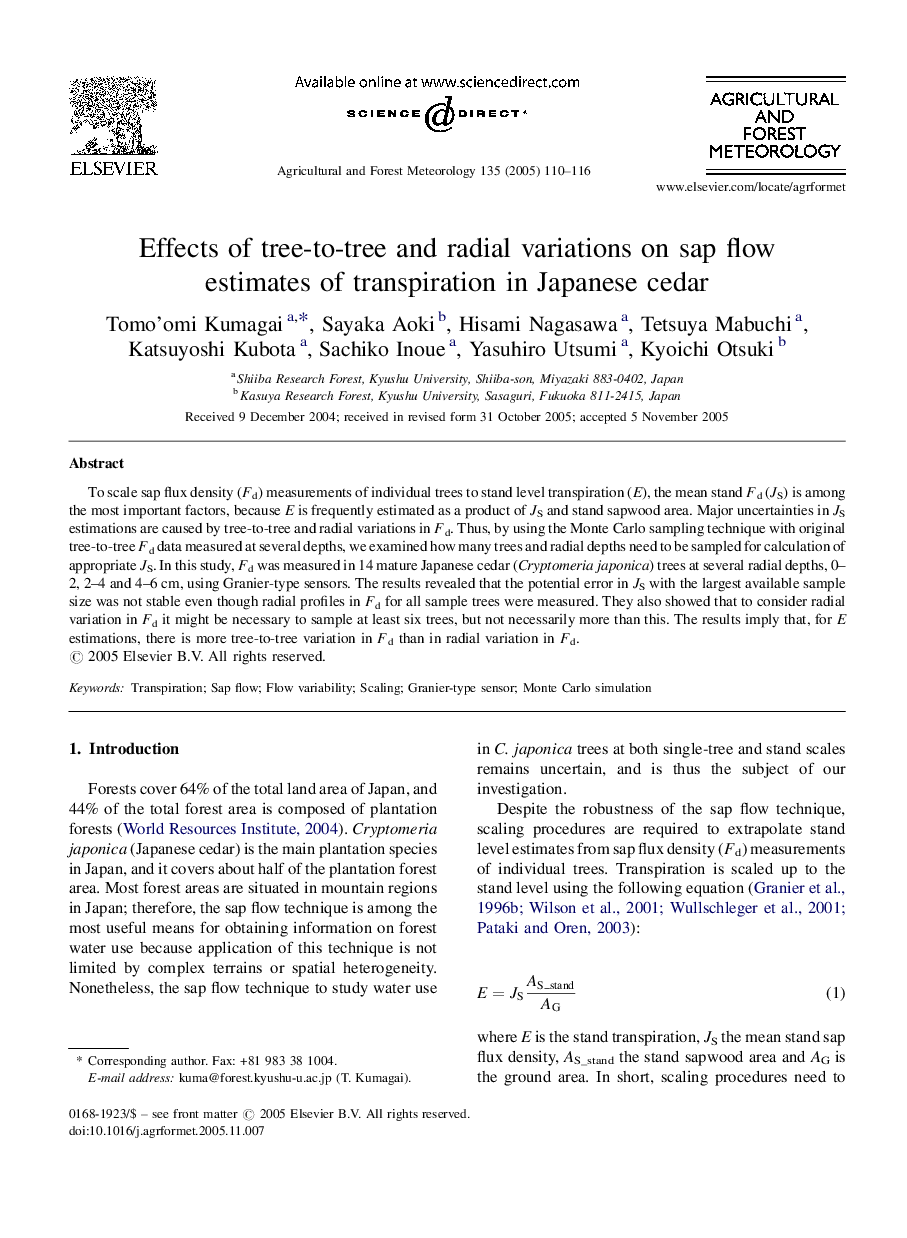| Article ID | Journal | Published Year | Pages | File Type |
|---|---|---|---|---|
| 9619379 | Agricultural and Forest Meteorology | 2005 | 7 Pages |
Abstract
To scale sap flux density (Fd) measurements of individual trees to stand level transpiration (E), the mean stand Fd (JS) is among the most important factors, because E is frequently estimated as a product of JS and stand sapwood area. Major uncertainties in JS estimations are caused by tree-to-tree and radial variations in Fd. Thus, by using the Monte Carlo sampling technique with original tree-to-tree Fd data measured at several depths, we examined how many trees and radial depths need to be sampled for calculation of appropriate JS. In this study, Fd was measured in 14 mature Japanese cedar (Cryptomeria japonica) trees at several radial depths, 0-2, 2-4 and 4-6Â cm, using Granier-type sensors. The results revealed that the potential error in JS with the largest available sample size was not stable even though radial profiles in Fd for all sample trees were measured. They also showed that to consider radial variation in Fd it might be necessary to sample at least six trees, but not necessarily more than this. The results imply that, for E estimations, there is more tree-to-tree variation in Fd than in radial variation in Fd.
Related Topics
Physical Sciences and Engineering
Earth and Planetary Sciences
Atmospheric Science
Authors
Tomo'omi Kumagai, Sayaka Aoki, Hisami Nagasawa, Tetsuya Mabuchi, Katsuyoshi Kubota, Sachiko Inoue, Yasuhiro Utsumi, Kyoichi Otsuki,
